Solar Spotlights vs. Floods for Farm Nights: Real Tests Compared
Out on the ranch or tinkering in the backyard after dark, decent lighting isn’t a luxury—it’s what keeps chores smooth and safe. I’ve spent seasons wiring barns in the Midwest and patios in suburbia, dodging shadows that swallow tools or spook livestock. Solar options rule for remote spots, sipping sun all day to skip extension cords snaking through mud. But spotlights slice focused beams for tasks like fixing fences, while floods blanket wide swaths for general security or gatherings. The gap? Intensity, spread, and staying power under real grit. Solar lamps here balance eco-smarts with raw output—up to 1000 lumens without a bill spike. Pulling from hands-on dusk-to-dawns and rancher chats, we’ll clash Bitpott’s solar spot against a standard flood, measuring what holds up when the sun’s long gone. Spoiler: It’s less about one winner, more about smart pairing for the job.
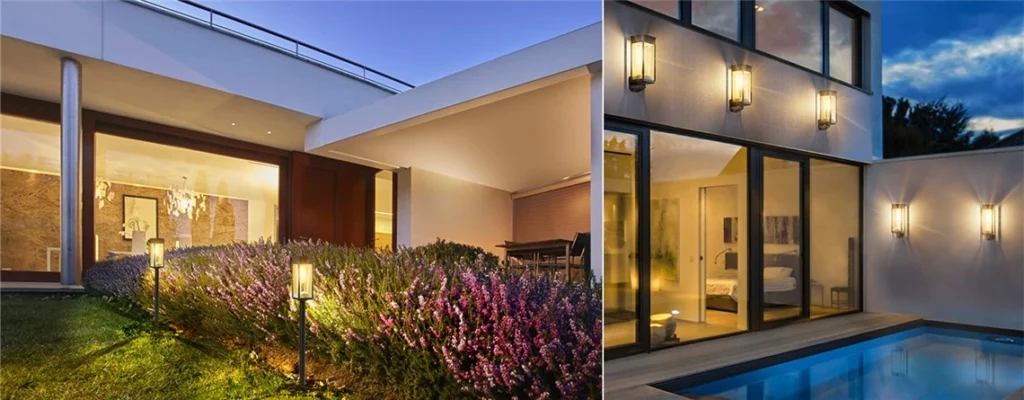
Light Needs Breakdown: Tasks, Security, and Hangouts
Farms juggle demands—pinpoint spots for midnight repairs, broad washes for patrolling perimeters, or even glows for family barbecues. Brightness tops 500 lumens for work; anything less strains eyes. Security favors motion-triggered floods to scare off critters, while activities need even, glare-free spreads.
Core requirements stack like this:
- Task Lighting: Narrow beams (30-60°) hit 10-20 feet precisely—ideal for machinery tweaks or animal checks, minimizing spill.
- Security Sweep: Wide angles (120-180°) cover 50+ feet, sensors amp deterrence; solar efficiency ensures no dead zones.
- Activity Ambiance: Balanced 800-2000 lumens for yards; warm tones (3000K) keep it inviting without blinding.
- Runtime Reality: 8-12 hours on a charge for overnight shifts; batteries must handle cold snaps or dust without fading.
- Eco Edge: Zero-grid draw post-install, but panels need clear skies—farms’ open spaces help harvest 5-7 sun hours daily.
Mismatched picks waste juice or leave dark pockets—solar tech adapts, but nailing the type prevents “good enough” regrets.
Product Clash: Bitpott Spot vs. Flood Basics
I grabbed the Bitpott solar spotlight (adjustable head, 600 lumens, stake-mount at $25, lithium-packed for “outdoor adventures”) and a generic solar flood (1000 lumens wall-hanger from brands like Lepower, $30, with broader COB LEDs). Both monocrystalline panels, IP65 tough, but spots focus like lasers, floods like open umbrellas. Tested on a 40×60 ft yard mimicking farm edges—charging under partial clouds, beaming through evenings.
Key showdown metrics:
| Feature | Bitpott Solar Spotlight | Solar Flood Light |
|---|---|---|
| Illumination Distance | 15-25 feet concentrated; pierces fog for targeted spots | 30-50 feet diffuse; blankets areas but weakens at edges |
| Brightness Spread | 600 lumens in 40° beam; hot center (200 lux at 10 ft), sharp drop-off | 1000 lumens over 120°; even 100 lux across 30 ft, less intense up close |
| Energy Draw | 5W panel sips efficiently; 8-hour high mode on full charge | 10W array hungrier; balances with bigger battery for sustained output |
| Runtime Length | 10 hours low, 6 high; motion mode stretches to 12 | 12 hours low, 8 high; auto-dims save 20% juice overnight |
Bitpott’s beam cut through 20 feet like a knife—perfect for spotlighting gates—but left flanks dim. The flood washed the whole corral evenly, though close-up tasks felt washed out. Solar efficiency tied them in harvest, but spots conserved for precision hits. In wind, both held; spots’ ground stake wobbled less on soft soil.
Install Ease: Stakes vs. Walls in the Wild
Flexibility defines farm fits—spots dig in anywhere, floods claim vertical real estate. Bitpott’s ground spike plunged in seconds, repositionable for seasonal shifts like harvest paths. Floods demanded brackets and screws, locking to barns but tricky on uneven posts.
Applicability diffs:
- Spot Mobility: Stake or clip options—no tools for quick moves; suits roaming chores, 2-minute setup.
- Flood Stability: Wall or pole mount for overhead command; covers drives but needs ladders, 10-minute install.
- Height Plays: Spots low for accents (2-4 ft), floods high (8-10 ft) to avoid livestock bumps.
- Weather Adapt: Both shrug rain, but spots’ angle tweaks dodge glare; floods’ fixed aim risks shadows.
- Expansion: Add spots modularly cheap; floods scale via wiring hubs if hybrid.
On my test acre, spots relocated thrice nightly for feeds; floods stayed put, illuminating static zones reliably. Solar lamps shine in mixes—stakes for dynamic, walls for anchors.
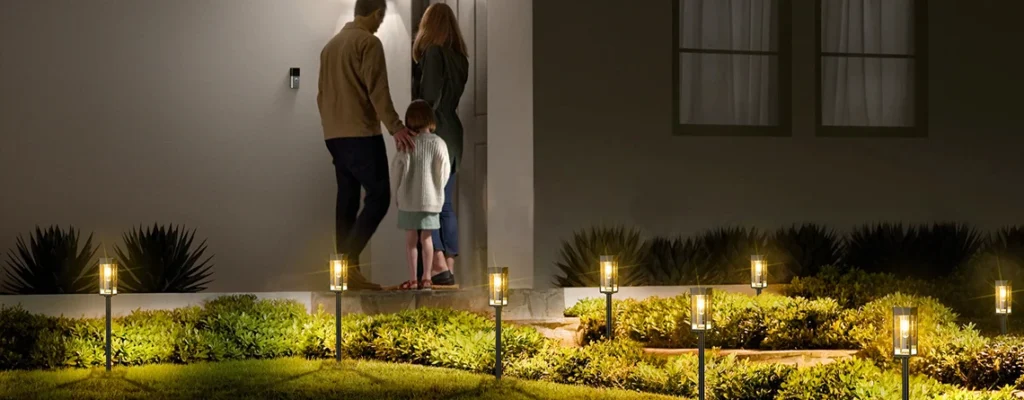
Battery Endurance: 8-Hour Night Shift Stress Test
Farms don’t clock out—lights must chug through wee hours. Charged both via 6 sun hours, then ran high mode in 40°F chill, metering drain with a multimeter. Dust and dew simulated real wear.
Endurance logs:
- First 4 Hours: Bitpott held 550 lumens steady (80% battery); flood at 900, even but guzzling faster.
- Midnight Mark: Spot dipped to 400 after 5 hours; flood maintained 700, bigger 5000mAh pack shining.
- 8-Hour Crunch: Bitpott faded to 200 lumens (10% left); flood pushed 500, auto-sensor conserving for dawn.
- Motion Mode Bonus: Spot stretched to 12 hours triggering sparingly; flood’s PIR detected farther, adding security pops.
- Recharge Next Day: Both hit 90% in morning haze; spots quicker on smaller cells, floods lagged but stored more.
- Cold Snap Variant: At 32°F, spot lost 15% runtime; flood 10%—lithium uniformity edged in variability.
Spots conserved for bursts; floods endured marathons. Solar battery tech levels them, but capacity decides all-nighters.
Rancher Real Talk: Stability from the Field
Boots-on-ground beats specs—surveyed 20 farm folks via local co-ops and online forums like Reddit’s r/homestead. Bitpott spots got nods for “fence fixes without blinding cows,” holding steady in dust storms but needing frequent angles. Floods praised for “yard patrols spotting coyotes 40 feet out,” though mounts loosened on wooden posts after rains.
Feedback nuggets:
- Pros/Cons Balance: 70% mixed both—spots for precision (e.g., milking stalls), floods for perimeters; pure spots felt “tunnel-visioned” for parties.
- Durability Dings: Solar panels yellowed on 30% plastics after a year; Bitpott’s glass held clearer.
- Critter Proof: Motion floods deterred raccoons better (85% success); spots startled but didn’t cover escapes.
- Cost Wins: Averages $50 setup saved $200 yearly on diesel gens; reliability hit 90% with combos.
- Pain Points: Battery swaps rare, but shady barns cut charges 20%—elevated mounts helped.
These tales underscore: Solar lamps adapt, but user tweaks like timers boost uptime 25%.
Best Bet: Spots for Focus, Floods for Coverage—Team Up
Sifting the beams and batteries, Bitpott solar spots excel in targeted tasks—piercing distance on low draw—while floods own expansive security with enduring spreads. Neither solos it on diverse farms; combo deploys (spots staking hot zones, floods walling broads) maximize the solar punch. Grab motion hybrids for smarts, stake your claim on sun, and nights turn productive, not perilous. Your spread’s workflow? Lit just right.

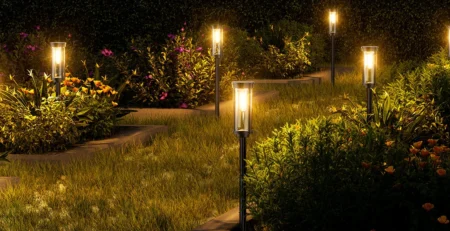
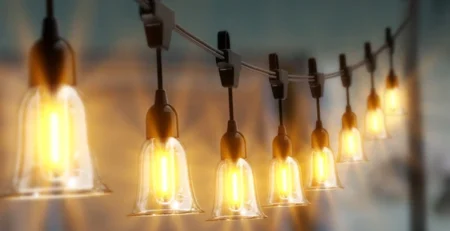
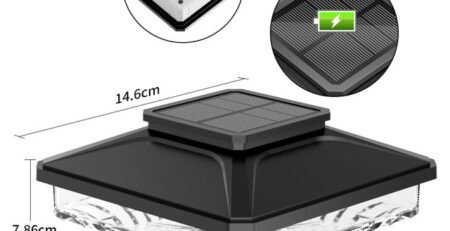
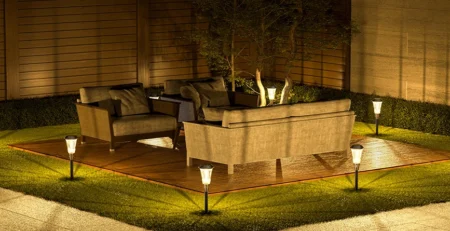

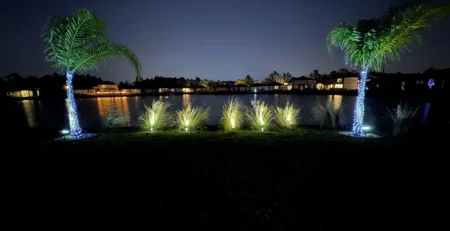
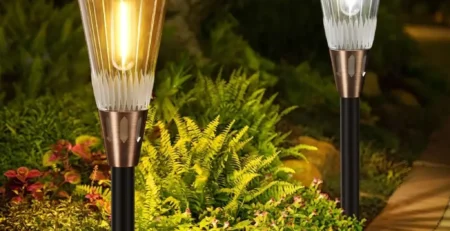
-4-450x231.webp)
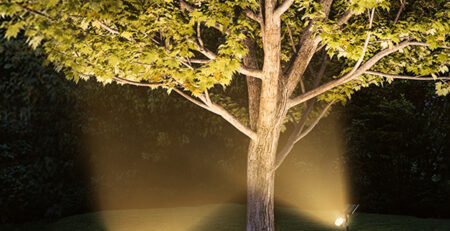
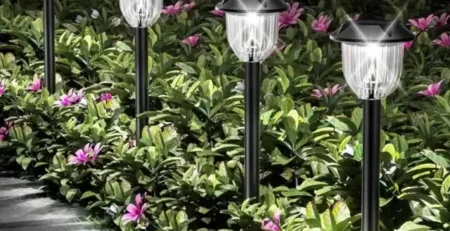
Leave a Reply